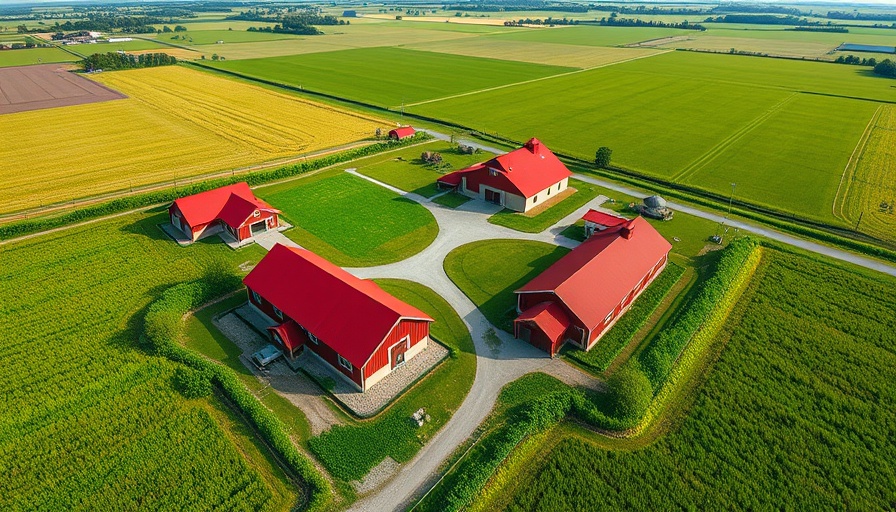
Unlocking the Future of Farming: The Smart Home Revolution
Farming is no longer just about tilling the soil and watching the seasons change; it's becoming a cutting-edge industry that marries technology with agriculture. The transformation of farms into smart homes represents a vital shift in how we approach rural living. With smart home technology becoming increasingly affordable and accessible, farmers can harness these tools to enhance efficiency, sustainability, and overall quality of life.
Why Embrace Smart Farm Technology?
The integration of smart technology in agriculture is more than a trend; it's a necessity for modern farming. By automating essential tasks such as irrigation, livestock monitoring, and even climate control, farmers can save significant time and resources. This type of technology can also conserve water and energy, leading to more sustainable practices that benefit both the planet and the bottom line. For example, sensor technology that averages soil moisture can precisely determine when to water crops, reducing waste and ensuring optimal growth.
The Heart of Your Smart Farm: Building the Control Center
At the core of a smart farm lies a reliable and efficient automation system. Every farm should have a command center—be it a centralized Wi-Fi network or a smart hub like Google Home—that coordinates all devices and sensors. For larger properties, implementing mesh Wi-Fi systems can enhance connectivity, ensuring that all areas of the farm work together seamlessly. This level of integration allows farmers to monitor crops, adjust systems, and ensure animal welfare from virtually anywhere, thus elevating their operations to a new height of efficiency.
Enhancing Your Environment: Automated Lighting and Climate Control
Imagine walking into a barn or greenhouse where the lights adjust automatically and the temperature is always perfect for your crops or livestock. Automated lighting and climate control systems take the guesswork out of managing these crucial factors. Equipped with motion sensors and weather-responsive capabilities, smart lighting systems not only provide convenience but can also significantly cut down energy costs. Smart climate solutions employ thermostats and humidity sensors that adapt to real-time conditions to maintain optimum environments, fostering healthier growth and productivity.
Securing Your Farm: Advanced Surveillance and Protection
As farms expand to cover larger areas, comprehensive security measures become paramount. Smart security systems, which combine cameras, motion sensors, and remote alerts, give farmers the peace of mind that their property is safeguarded against intruders and threats. Furthermore, Bluetooth-enabled smart locks and gates apply an added layer of security, allowing authorized access while eliminating the hassle of traditional keys. With the ability to monitor the farm remotely, owners can ensure their investments are well protected even when they are far away.
Future Insights: How Smart Farming Will Evolve
Looking ahead, the future of smart farming holds even greater promise. As technology continues to advance, we can expect the introduction of artificial intelligence in decision-making processes, which will further optimize resource management and increase production efficiency. Additionally, the trend towards renewable energy solutions—such as solar-powered systems for irrigation and lighting—could become commonplace in smart farms, making them not only efficient but also environmentally friendly.
Conclusion: Transforming Farms for a Sustainable Future
The transition to smart homes in farming is not just about keeping pace with technology; it's about reshaping the future of agriculture. By integrating smart technology, farmers can transform their operations, still remain hands-on, and create more sustainable practices. Embracing these innovations can ensure that farming not only survives but thrives in an era increasingly defined by digitalization. As we stand on the brink of this agricultural revolution, it’s clear that smart technology will play a key role in defining tomorrow's farms. Start exploring the options available, and be part of the change that can lead to a more productive and sustainable future.
 Add Row
Add Row  Add
Add 




 Add Row
Add Row  Add
Add 
Write A Comment